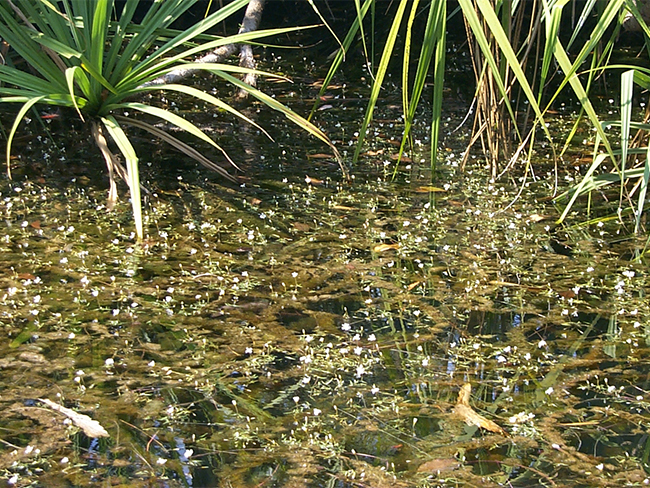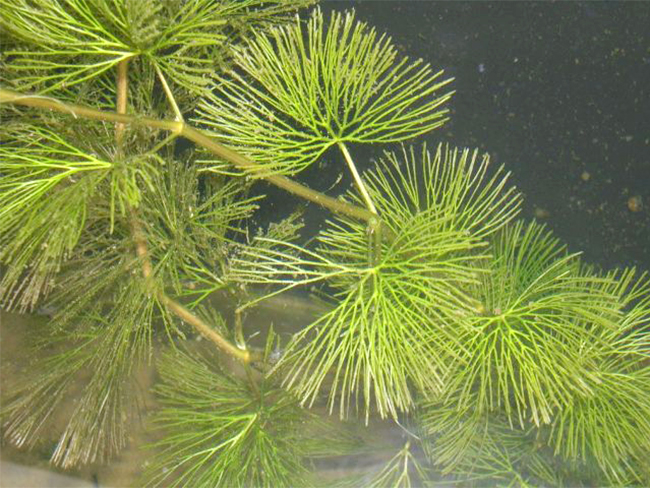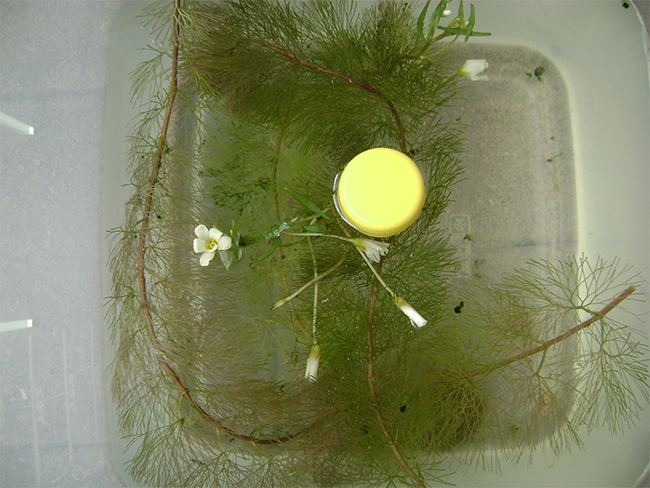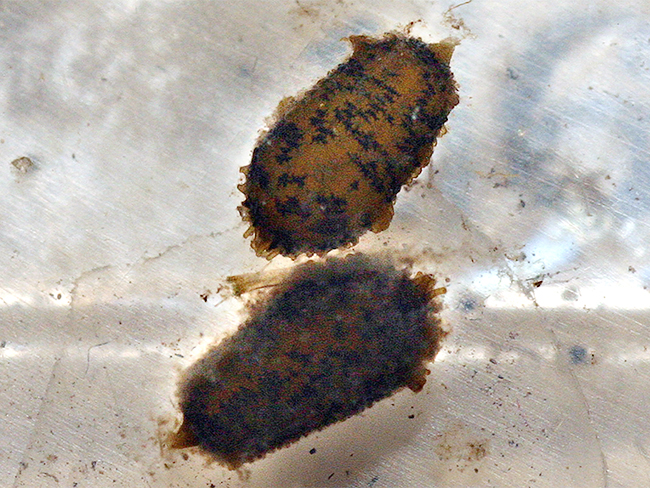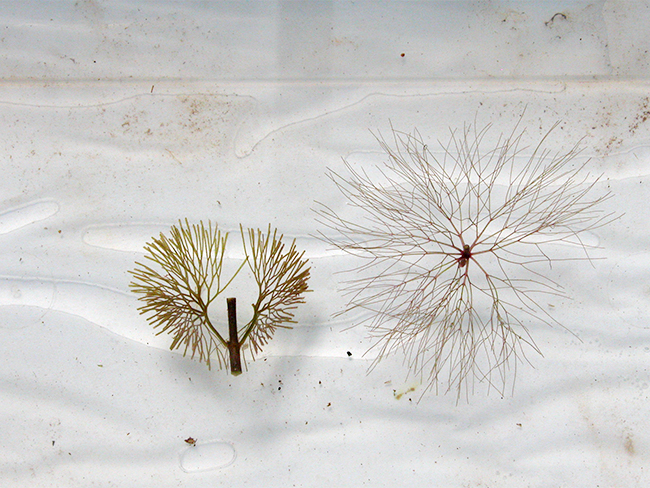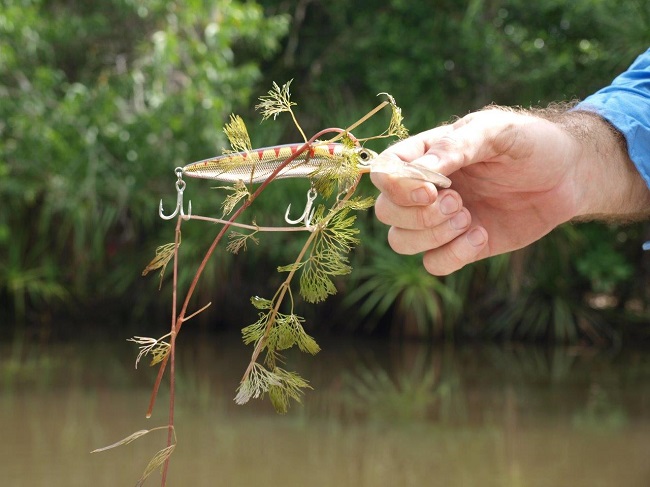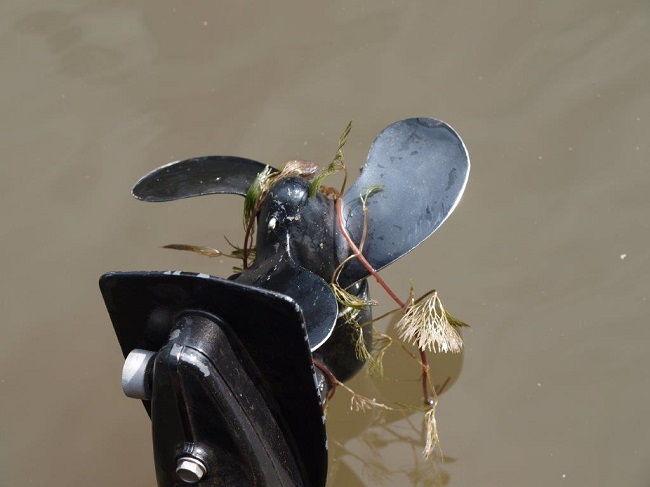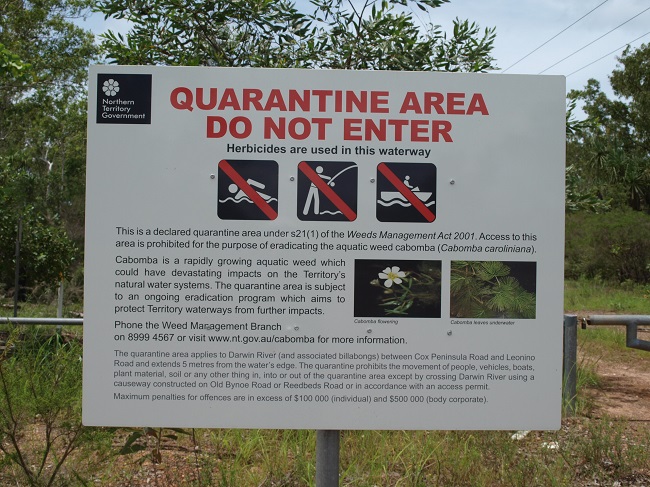Cabomba
Scientific name: Cabomba caroliniana
Declaration status: Class A
Cabomba is a Weed of National Significance. For more information, go to the Weeds Australia website.
Cabomba is native to the Americas, but has been used extensively in the aquarium industry.
Discarded aquarium contents were probably the cause of the only two infestations in the Northern Territory (NT), found in 1996 at Marlow Lagoon (eradicated) and in 2004 at Darwin River (persisting).
Cabomba likes to grow in slow moving or stagnant water bodies with silty soil.
This means that billabongs and floodplain areas would be highly susceptible to cabomba if it were to establish more widely in the NT.
Watch the cabomba eradication program video on YouTube.
Impact
Cabomba can have all of the following impacts:
- form dense populations very quickly
- displace native plants
- reduce water quality
- decrease dissolved oxygen levels
- restrict water flow
- taint potable water supplies
- increase irrigation and water supply costs.
Identification
You should use this as a guide. There may be other plants or weeds that look similar.
- the plant is mostly submerged growing to the surface to flower
- between 2m to 10m long and usually rooted to the water body floor
- stems are branched
- white or reddish brown hairs on stems - elongate and fragile and up to 0.4cm in diameter
- 2 types of leaves (above and below water surface)
- flowers are white/yellow often a pink tinge on the tips and are 2cm wide
- flowers form on short stems near or on the water’s surface
- flowers may be present all year in the NT
- seeds are approximately 4mm long and 1mm wide and are dark when mature which are coated in gelatinous mucus.
To find out more, get the cabomba weed note on the Department of Lands, Planning and Environment website.
If you are unsure, contact the Weed Management Branch.
Similar looking plants
Hornwort (Ceratophyllum demersum) is a native water plant that looks similar to cabomba.
You can tell them apart by looking at the leaf structure, however since cabomba poses such an extreme risk to the NT waterways, you should always report any sighting that you think could possibly be cabomba.
There is no harm in accidentally reporting hornwart.
If you think you may have seen cabomba, or have this weed on your property, don't attempt to control it.
Contact the Weed Management Branch immediately for assistance.
Cabomba (left) beside hornwort (right).
Control
If you think you may have seen cabomba, or have this weed on your property, don't attempt to control it.
Contact the Weed Management Branch immediately for assistance.
Spread
Cabomba can reproduce and spread by the movement of small plant pieces and seeds.
Anything that moves through affected water can sever cabomba's elongate and fragile stems.
Broken stem fragments, as small as 1cm, and with only one pair of leaves, can take root and grow into new plants. Fishing lures, traps, and outboard motors can produce hundreds of fragments.
Spread prevention
The only known infestation of cabomba is located in a quarantine area on Darwin River. All entry into this area is prohibited to prevent spread of cabomba out of this area into other Territory freshwater systems and Darwin River Dam.
Given its historical use in the aquarium trade, positive cabomba identifications have been made in urban ponds and fish tanks around Darwin and Pine Creek.
It is illegal to trade or purchase cabomba online.
You must report any suspected cabomba immediately to the Weed Management Branch.
Darwin River Cabomba Eradication Program
The NT Government has been working to eradicate cabomba (Cabomba caroliniana) from the Darwin River for more than a decade.
The infestation of cabomba has now been reduced to less than one percent of its original size and activities have been intensified to finally remove cabomba from the NT.
The Cabomba Eradication Program includes 3 key activities:
- An integrated control program that includes large-scale treatment of cabomba using the aquatic herbicide, Shark.™
- The establishment of a legislated quarantine zone in Darwin River between Cox Peninsula Road and Leonino Road to prevent weed spread.
- Powers to take legal action against any person or company that breaches the quarantine zone.
If you think you may have seen cabomba, or have this weed on your property, do not attempt to control it. Contact the Weed Management Branch immediately for assistance.
Cabomba is on the alert list for environmental weeds. This is a list of weeds that threaten biodiversity and cause other environmental damage.
Darwin River quarantine area
A quarantine order PDF (434.1 KB)is in place for cabomba affected areas of Darwin River between Cox Peninsula Road and Old Bynoe Road until September 2028.
Get the cabomba quarantine area map PDF (200.4 KB).
The quarantine prohibits the movement into or out of this section of river and the five metres of land adjacent to the water's edge. This includes:
- people
- objects
- boats
- vehicles
- fishing equipment.
Non permitted access into the quarantine zone may incur penalties in excess of $100,000 for individuals and in excess of $500,000 for a body corporate.
Give feedback about this page.
Share this page:
URL copied!
